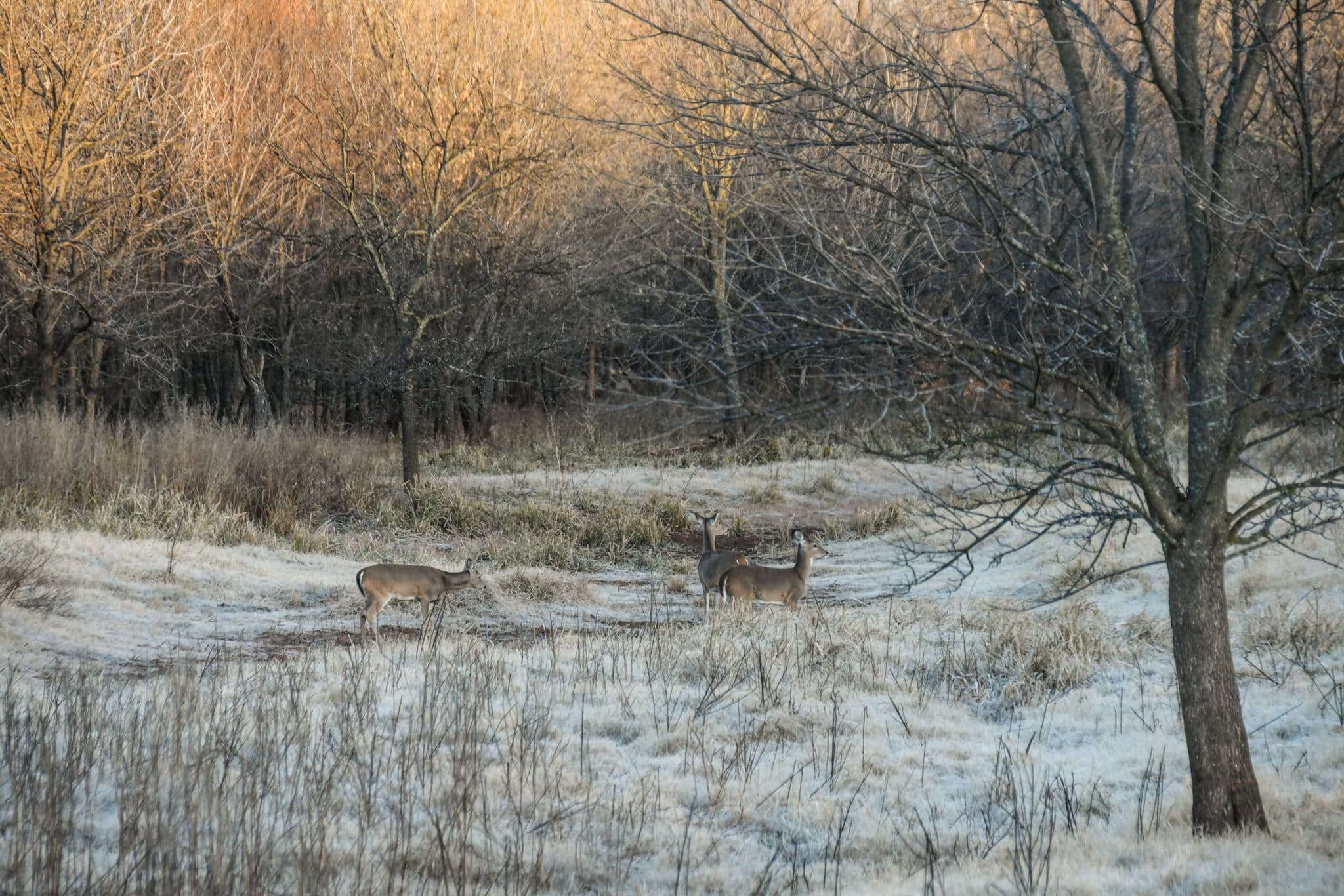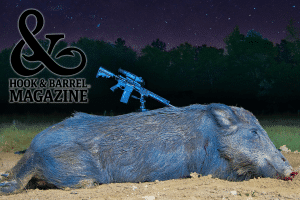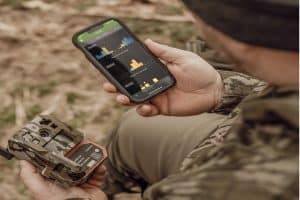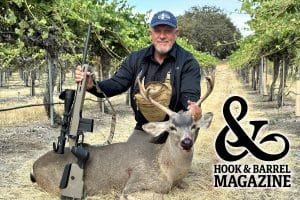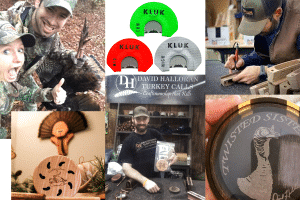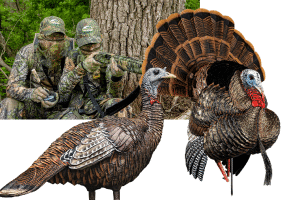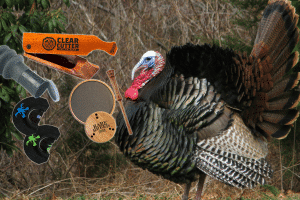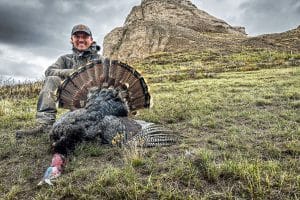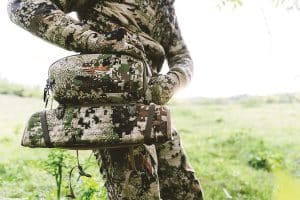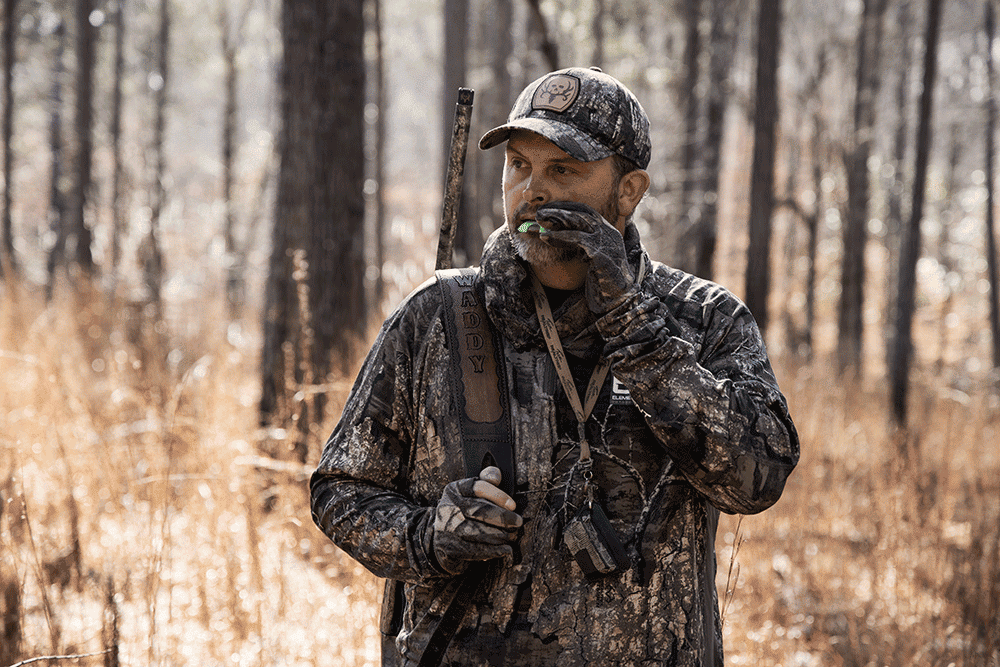
If you’re going to turkey hunt, take some time and dig into the knowledge dropped by the legendary turkey hunter Michael Waddell.
You might recognize Michael Waddell from his role as host of his Bone Collector outdoor TV show. But what’s important to note is that his role is no act. He really is the affable, knee-slappin’, one-linin’, arrow-slingin’, guitar-playin’, unapologetic critter-baggin’ country boy he plays on TV.
No doubt this authenticity is why he’s one of the most popular hunting show celebs of all time. But don’t let his aw-shucks drawl from Booger Bottom, Georgia, fool you. A turkey-calling champion as a teen, he’s one of the best all-around hunters of a generation, and nothing revs him up quite like the thundering gobble of a fiery longbeard.
In over 30 years of professionally filming, calling, and hunting turkeys, he’s studied them like a psychoanalyst studies a serial killer. The result is a knowledge of turkey behavior—and a knack for bagging them—rivaled by only a handful of hunters anywhere.
How? He learned the basics of turkey hunting early—tactics passed down over generations. Then through necessity, experience, and talent, he developed cutting-edge techniques that are often the opposite of what the old-timers will tell you. In this article, you’ll learn Turkey Hunting 101—because in Michael Waddell’s words, “Eddie Van Halen had to learn a few chords before he belted out Eruption—followed by his high-speed advice for bagging a turkey this spring.
Turkey Hunting 101 with Bone Collector’s Michael Waddell
Like any pursuit, you must put yourself in a position to be successful. This means hunting where turkeys are. And the only way to truly know where turkeys live—and where they eat, sleep, and breed—is to scout. The fact is, great scouting can afford an average hunter great success. The problem is, today many of us don’t have time to get out much during the season, much less invest precious days off into scouting.
“If you know a turkey’s hangouts, food sources, and daily patterns, then huntin’ him can be easy. But while on the road filming, I rarely have time to scout. So, this is where modern technology and smartphone-based apps like BaseMap are handy. Trailcams can do your homework for you if you place them ahead of time; and don’t forget about local intel like texting a buddy or a farmer to ask, “Seen any birds?”

Find Where Turkeys Roost
If you read the first chapter of Turkey Hunting 101, then on opening morning you should know exactly where a turkey is roosted so you can sneak in before dawn. There, you’ll set up with your back to a tree, your shotgun on your knee pointing toward the bird so you can call and shoot with as little movement as possible.
Many guys even stake a hen decoy in front to embellish the ruse. This is what every father who’s ever taught a son how to turkey hunt teaches. If everything goes right, the boss tom turkey with sabers for spurs and a beard like Osama Bin Laden will pitch down from the roost tree, hear your seductive yelps, and march right in, at which time you’ll shoot him in the face with your Mossberg, marvel at his beauty, and sling him over your shoulder on your way back to the truck.
But more often, he’ll fly from the roost in the opposite direction; he’ll pitch down, gobble a few times, and walk off; he’ll gobble his head off but hang up just out of range; he’ll stay completely silent; or maybe there’s no gobbler at all. Any of these common turkey hunting problems cause novice and even old-school hunters mass consternation. So they sit and call fruitlessly for the rest of the morning before finally hanging it up and sulking back to momma.
“Because I was working and running cameras so much, I was often forced to go out “blind” in the morning at dawn, listen for birds, and let them tell me what to do,” says Waddell.
Hunt Turkeys with an Open Mind
Through copious trial, error, and remembering what sounds birds made along with their subsequent actions, he became a master manipulator of turkeys. Indeed, sometimes he believes he knows what a turkey is going to do before it does.
“Rule Number One each and every morning is hunt turkeys with an open mind,” he says. “The best way to be an effective springtime turkey hunter is like angling—not fishing by just tossing a lure out and hoping something bites but rather knowing bass are stacked up on a ledge even though they might not want to bite.
“The best anglers present a bait of the right color, the right size, at the right speed, depth, and angle to make ‘em bite. It’s the same for turkey hunting; you’ve gotta understand what gobblers want, why they want it, and how and when to give it to them. Use strategy, not luck.
“So the first thing I do in the morning is to listen to them, and I mean really listen,” says Michael Waddell. “If nothing’s talking, I’ll use a locator call* to shock one into gobbling. Then I’ll sneak within 100 yards of him. Then I’ll give a subtle tree call while he’s on the roost just to get him to gobble and to let him know where I’m at. But what I’m really doing is taking his temperature while listening for other birds around him.”
What’s a tree call? A tree call is a very soft, short series of yelps given by hens while on the roost.
Dominant vs. Younger Wild Turkeys
“I’ll ask myself: Is he a dominant bird, ready to breed? Are there hens? Are there multiple toms or jakes near him? All this data helps me predict his actions and continually plan my next move.”

“If, for example, I can tell he’s alone, I know I have a great chance of killing him. When he hits the ground, I’ll get aggressive with my calling with heavy yelps and cutts. But boss toms are rarely alone. So, if I hear hens, I won’t be surprised if he flies down and goes away from me—because he’ll likely follow his hens who don’t like to share their men!”
But if I’ve heard another gobbler in there—a subordinate bird, but not necessarily a small one—I’ll stay where I’m at and call. Often a satellite gobbler will sneak in silently. After all,” says Waddell, “turkeys have zero humility and no morals. They’d get it on with every hen if they could—if it weren’t for one thing: Fear of getting their tail whipped by another bird with no morals.”
The Post-Flydown Plan
After flydown, many old-school experts advise new hunters to stay stone still and call some, but not to over-call. The accepted theory is, the chances of a keen-eyed turkey hearing or seeing you isn’t worth the risk of moving, and so your best bet is to sit, call sparingly, and hope one eventually hears you and comes in.
“Because I trust my ears, I generally know about how many turkeys are out there, if there are multiple gobblers, and which way they’re headed. I try to figure out which gobbler will be easiest to kill based on his enthusiasm and location,” says Michael Waddell, “then I go get him. After all, the best turkey hunters typically take an offensive approach. Attack mode seems to yield my best results.”
Movement Is Key
“For example, if I call but can tell the turkey isn’t moving or hasn’t gone too far, I’ll often move 30 yards and call at him from another angle. Plenty of times a subtle move—a change of angle—is all it takes to get a longbeard to commit. But if they’re moving off, and I don’t know the property well, I’ll get out my phone and look on my map. Plenty of times I’ll see a fence line, or and I can easily tell that the gobblers are strutting up and down it. Or maybe it’s a food plot where they’ll feed. Maybe I see a creek ahead, and so I know why they won’t come any further. The point is, I look for likely places they’re going—or why they aren’t coming in—and improve my location,” he says.
“Humans and turkeys walking through the woods sound identical. Turkeys are used to hearing other turkeys. So, I ease through the woods while calling, and plenty of times a turkey will answer me,” says Wadell. “And don’t worry if you bump one; they get spooked by predators all the time. They’ll be back.”

Mid-Morning Check-In
By mid-morning, if you’re not hearing or seeing turkeys and nothing’s happening, old-timers will often say something like: “Welp, they must be henned up; Might as well go get a burger and try ‘em again in the evening when they head to roost.”
“If the land is big enough—several hundred acres or bigger—I’ll hunt all day because any time is a good time to kill a turkey in the breeding season. If I’m seeing signs, I’ll try to figure out why I’m not hearing them. Were they just not gobbling? Did they move somewhere else out of hearing distance?”
Rather than waiting on the whim of a bird with a pecan-sized brain, this is when Michael Waddell will make something happen by a strategy known as “runnin’ and gunnin’. The goal is to cover ground while calling and glassing, in an attempt to see or hear turkeys. Pause often to call, and listen as you try to “strike one up” with yelps or a locator call. If a gobble answers you, it’s on!
“If I don’t hear any turkeys where I know there should be turkeys,” says Michael Waddell, “it tells me I can’t be as aggressive. So, I’ll hunt them as I hunt deer and get somewhere like a food plot where I know they’ll eventually go. But then use a duck hunter’s trick by setting up a jake decoy to give them something to see.”
The Three Basic Calls Every Turkey Hunter Should Know
Nearly everyone agrees that turkey hunters must know at least three basic calls, including the cluck (a turkey’s hello), the yelp (the basic hen mating call), and a locator call (that reflexively shocks gobblers into gobbling), such as a crow or owl call. But turkey hunting how-to articles universally advise not to over-call, believing that hammering a tom’s ears with incessant yelps is akin to a gal yapping too much on a first date and can spook a longbeard off. They also insist that overcalling can “educate” by teaching him to be more wary of certain-sounding calls.
“First of all, remember that it’s called turkey hunting, not turkey calling; however, calling is a tool that can help put one in the truck. So, you need to learn how to call, but calling can’t replace woodsmanship.”

“But to learn calling, get in the woods or go to YouTube to learn a turkey’s cadence and rhythm,” says Waddell. “Tone doesn’t matter as much. Sure, there are musicians of the call like Matt Morrett and Eddie Salter [Waddel is also one] who can rile a gobbler up [get him to commit] quicker than another fella, but you don’t have to be a master caller with perfect pitch to call a turkey in. You just have to know what to say and when to say it.”
“Get a good box call,” he says. “The rhythm is easy. Then once you have the sounds down, you’ll have a good tuning fork to learn the other types of calls.”
Over-calling? Not for Michael Waddell
“Concerning over-calling, I think the theory is bunk. Hens instinctively know when their few-day breeding window is open, and when it is, they just about won’t ever shut up. So, I mimic a hot hen, and it often pays off. However, before you can tell what mood the hens and gobblers are in, subtle and soft usually works better in working turkeys than loud and aggressive. So, start soft, then ramp up with emotion if turkeys are responding energetically.”
Get Aggressive But Don’t Lose Sight of the Hunt
“Keep in mind,” says Michael Waddell, “you’re not chasin’ Elon Musk with a 200 IQ; you’re huntin’ a bird that’s hard-wired to get it on at any time during the day with little thought for anything else. So don’t be afraid to be aggressive; call often, move around, and call some more.
“Besides, what’s the worst thing that can happen? You’ll have to go huntin’ again tomorrow?
BENELLI PERFORMANCE SHOP SBE3







